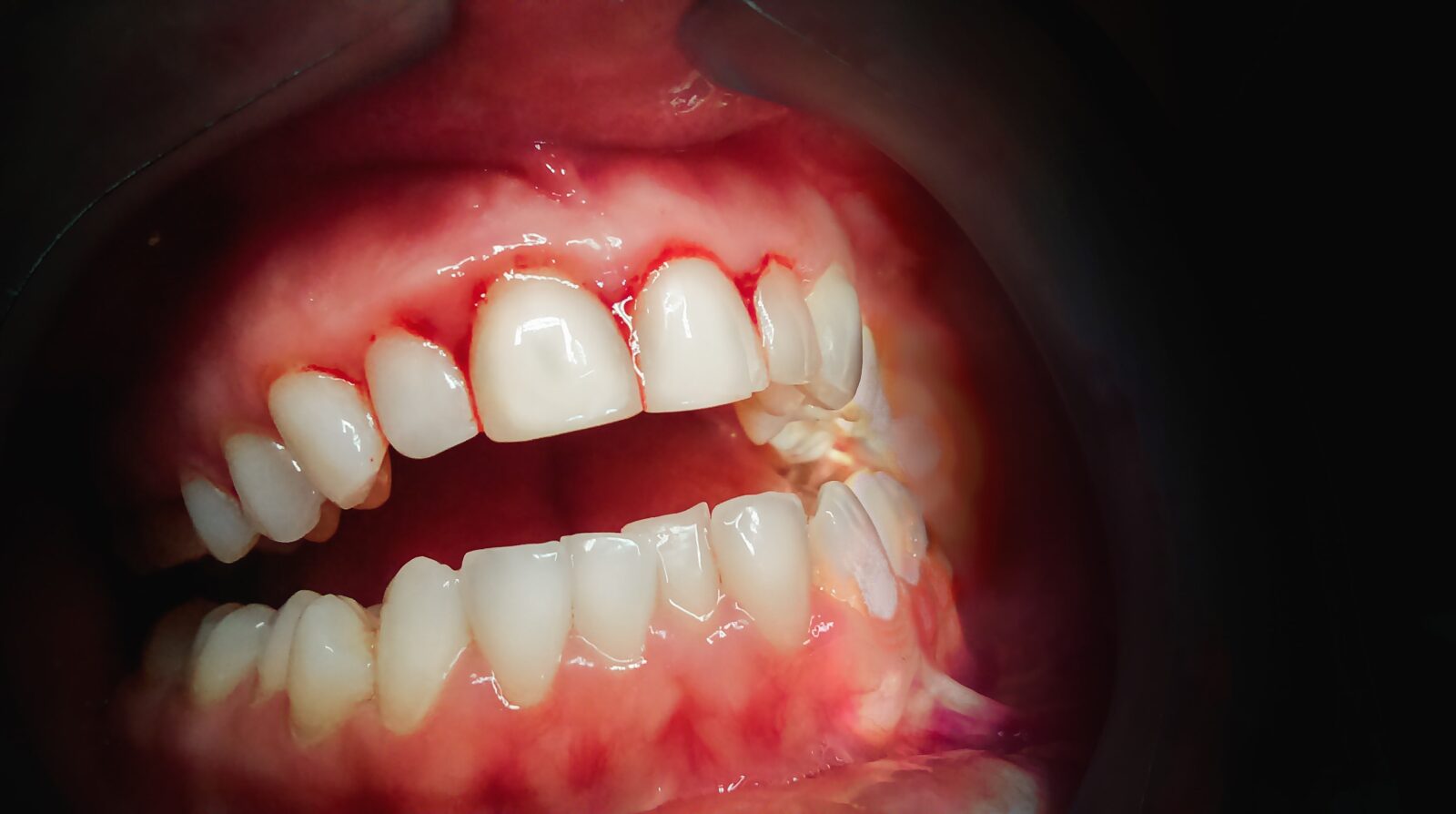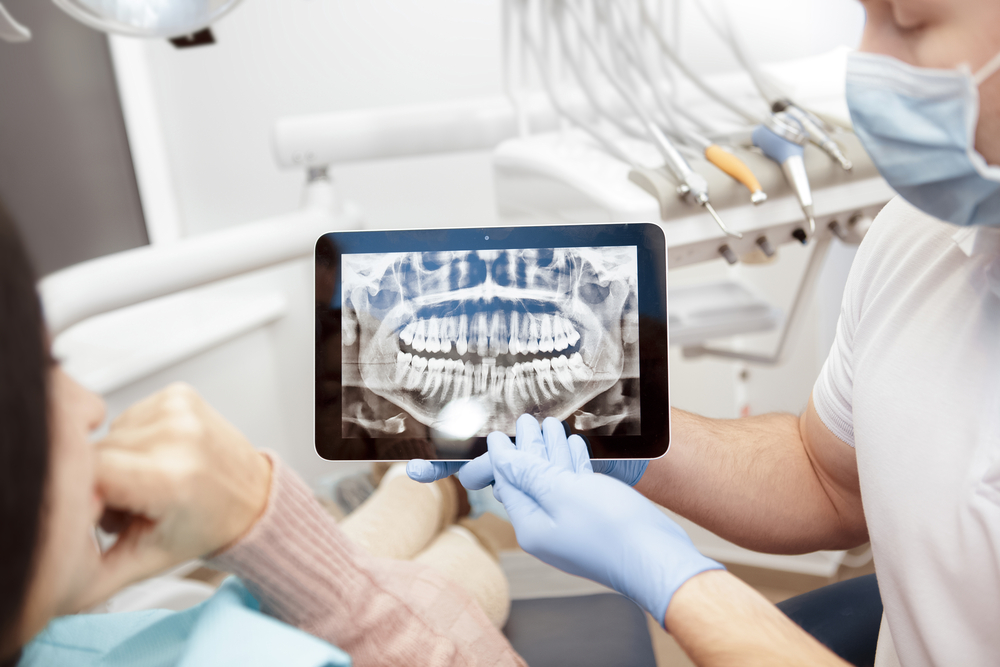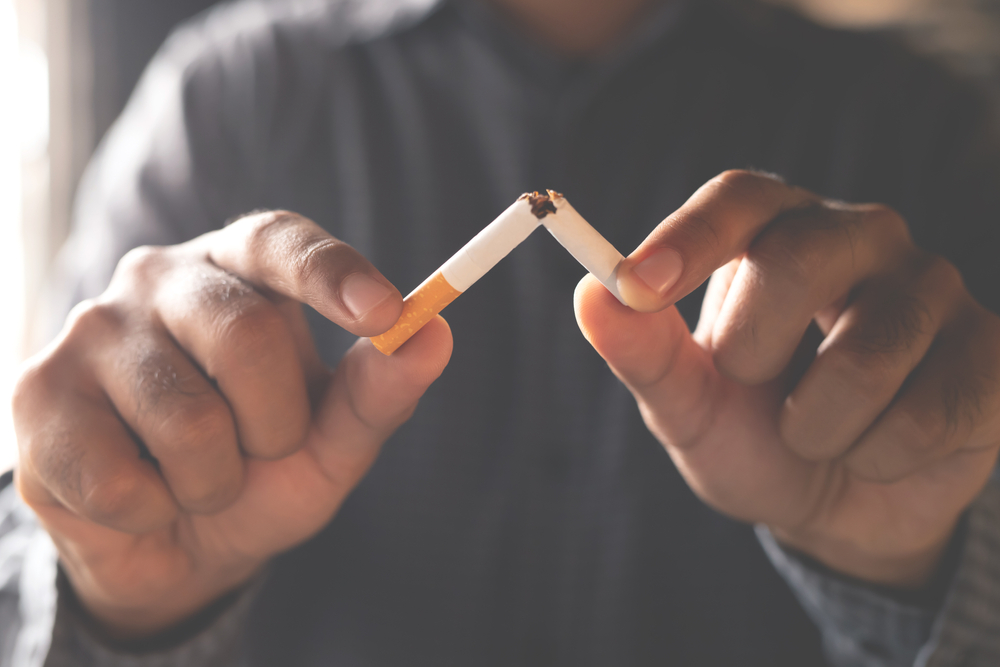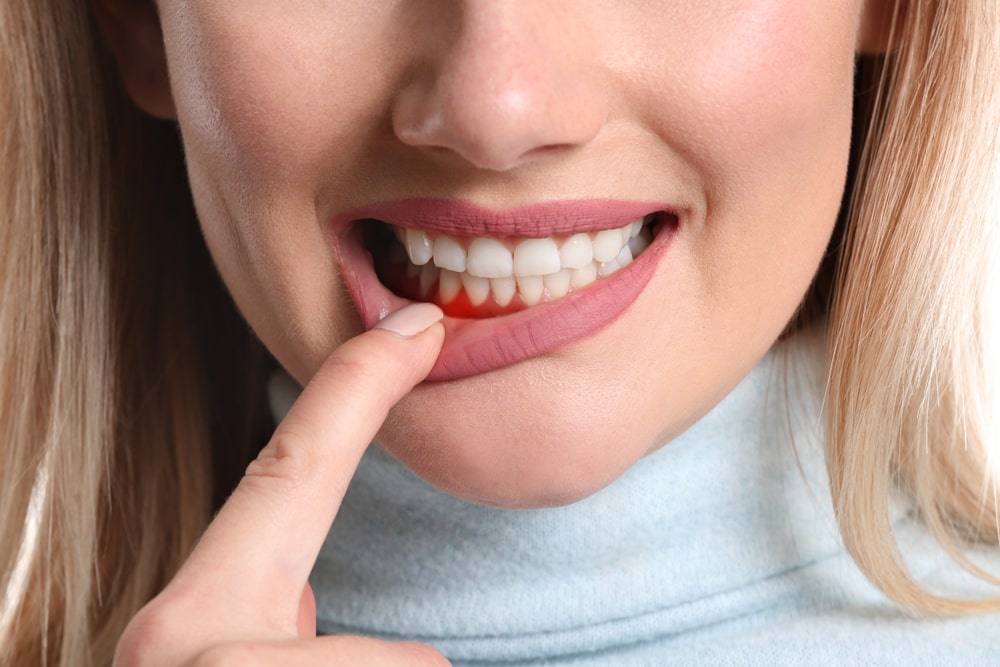Bleeding gums can be alarming. You’re brushing or flossing, and suddenly you notice a pink tinge on your toothbrush or dental floss. While it’s a common occurrence, it’s not something to be ignored. Let’s delve into the reasons behind bleeding gums and what you can do about it.
Reasons Why Gums Bleed
Gingivitis
Gingivitis is an early stage of gum disease that arises primarily due to the accumulation of plaque on the teeth and gumline. Plaque, a sticky film of bacteria, releases toxins that irritate and inflame the gum tissue. As the gums become inflamed, they become tender, swollen, and more prone to bleeding, especially during brushing or flossing. If left untreated, this inflammation can progress, causing the gums to pull away from the teeth and form pockets where more bacteria can accumulate. Over time, this can lead to more severe forms of gum disease, like periodontitis. Thus, the presence of bleeding gums is often a telltale sign of gingivitis and a warning that one’s oral hygiene practices may need improvement.
Medications
Certain medications can have an impact on oral health, leading to symptoms like bleeding gums. Notably, anticoagulants or blood thinners are designed to reduce the blood’s ability to clot, which can make individuals more susceptible to bleeding, including from the gums during routine activities like brushing or flossing. Additionally, some medications can cause dry mouth, reducing the saliva’s natural ability to cleanse the mouth of bacteria and food particles. This can lead to an increase in plaque, which can irritate the gums and cause bleeding. Other drugs, such as certain antihypertensives, antiseizure medications, and immunosuppressants, can lead to gum enlargement, making the gums more vulnerable to injury and bleeding. It’s crucial for patients to inform their dentist about any medications they’re taking, as this can influence dental care recommendations and interventions.
Improper Brushing or Flossing Techniques
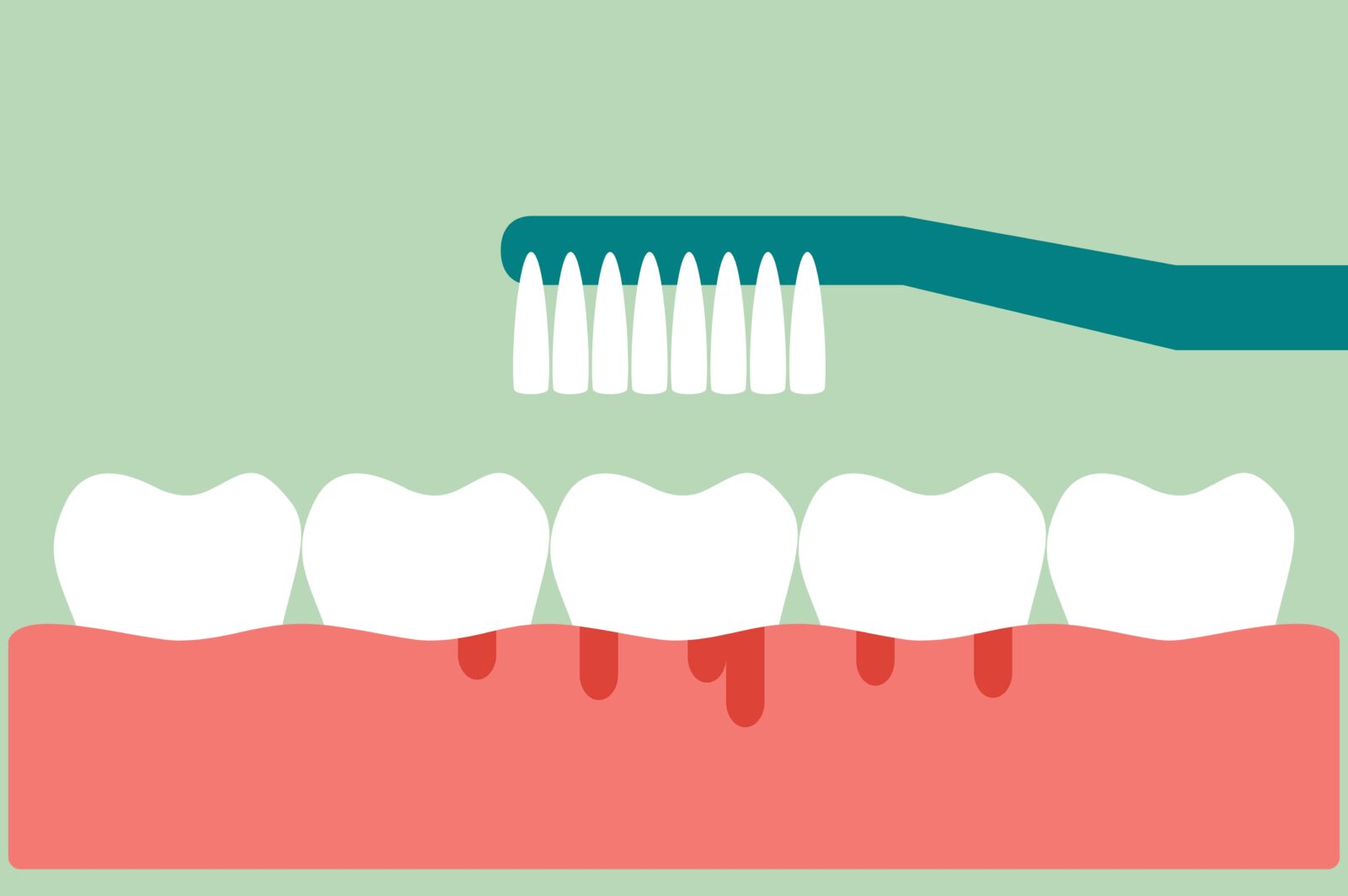
Improper brushing or flossing techniques can be detrimental to gum health and often lead to bleeding gums. Using a hard-bristled toothbrush or applying excessive force when brushing can cause abrasions and irritate the delicate gum tissue. Similarly, aggressive flossing or using a sawing motion can injure the gums, leading to cuts or inflammation. Over time, these abrasive habits can weaken the gum tissue, making it more susceptible to bleeding even with minimal provocation. Furthermore, improper techniques might not effectively remove plaque, allowing it to accumulate and exacerbate gum irritation. It’s essential to use a soft-bristled toothbrush and adopt gentle, circular brushing motions, coupled with careful flossing, to maintain gum health and prevent bleeding.
Pregnancy Gingivitis
Pregnancy gingivitis is a condition that affects many pregnant women due to the hormonal changes that occur during pregnancy. These hormonal fluctuations increase blood flow to the gum tissues and affect the body’s response to the toxins produced by plaque. As a result, pregnant women may experience heightened sensitivity and inflammation of the gums, making them more prone to bleeding, especially during brushing or flossing. The gums may appear redder, swollen, and bleed easily. If not addressed, pregnancy gingivitis can progress, leading to more severe gum issues. It’s crucial for expectant mothers to maintain meticulous oral hygiene and have regular dental check-ups to manage and mitigate the effects of pregnancy gingivitis and ensure the health of both mother and baby.
Medical Conditions
Certain medical conditions can directly or indirectly contribute to bleeding gums, highlighting the intricate connection between systemic health and oral well-being. For instance, individuals with bleeding disorders, such as hemophilia or von Willebrand disease, have an impaired blood clotting mechanism, making them more susceptible to prolonged gum bleeding even after minor injuries. Diabetes, another prevalent condition, compromises the body’s ability to fight infections, making diabetics more prone to gum disease and associated symptoms like gum bleeding. Leukemia, a type of blood cancer, can also manifest early symptoms in the mouth, including swollen, bleeding gums. Additionally, conditions that cause immune system suppression or compromise can leave the gums more vulnerable to infections and inflammation. It’s imperative for individuals with chronic medical conditions to be vigilant about their oral health and communicate any concerns to both their dentist and primary care physician.
Dental Appliances
Dental appliances, such as braces, dentures, bridges, and retainers, play a crucial role in addressing various dental issues. However, if not fitted correctly or maintained properly, they can become a source of gum irritation. Braces, with their brackets and wires, can rub against the inner cheeks and gums, leading to small injuries or ulcers that bleed. Ill-fitting dentures or bridges can exert uneven pressure on the gums, causing sore spots and subsequent bleeding. Additionally, dental appliances can make oral hygiene more challenging, leading to plaque accumulation around the appliance. This buildup can irritate the gums, causing inflammation and bleeding. Regular dental check-ups are essential to ensure that dental appliances fit correctly and to receive guidance on proper cleaning techniques to maintain gum health.
Tobacco Use
Tobacco use, whether in the form of smoking cigarettes, chewing tobacco, or using snuff, poses significant risks to oral health. The harmful chemicals present in tobacco products can irritate and damage the gum tissues, leading to inflammation and increased susceptibility to infections. Over time, tobacco users often develop a condition known as smoker’s keratosis, where the gums become thicker and less resilient. This change in gum texture, combined with the compromised blood flow often seen in smokers, makes the gums more prone to bleeding and less able to heal efficiently. Moreover, tobacco use heightens the risk of gum disease, a condition characterized by inflammation, gum recession, and bleeding. Persistent tobacco use not only exacerbates gum bleeding but also hinders the effectiveness of treatments, making it imperative for individuals to consider quitting to improve their oral and overall health.
What Can You Do?
Maintain Good Oral Hygiene:
Maintaining good oral hygiene is the cornerstone of preventing bleeding gums and ensuring overall dental health. Regular and effective brushing removes food particles and bacterial plaque from the surface of the teeth, preventing the buildup that can irritate and inflame the gums. Flossing, often overlooked, is equally vital as it dislodges debris from between the teeth and under the gumline, areas where a toothbrush might not reach. Additionally, using an antiseptic mouthwash can further reduce bacteria in the mouth. When oral hygiene is neglected, plaque accumulates and hardens into tartar, which can only be removed professionally. This buildup creates an environment conducive to gum inflammation, leading to gingivitis, the primary cause of bleeding gums. Thus, a consistent oral care routine not only keeps teeth clean but also safeguards the gums, preventing inflammation and the subsequent bleeding.
Regular Dental Check-ups:
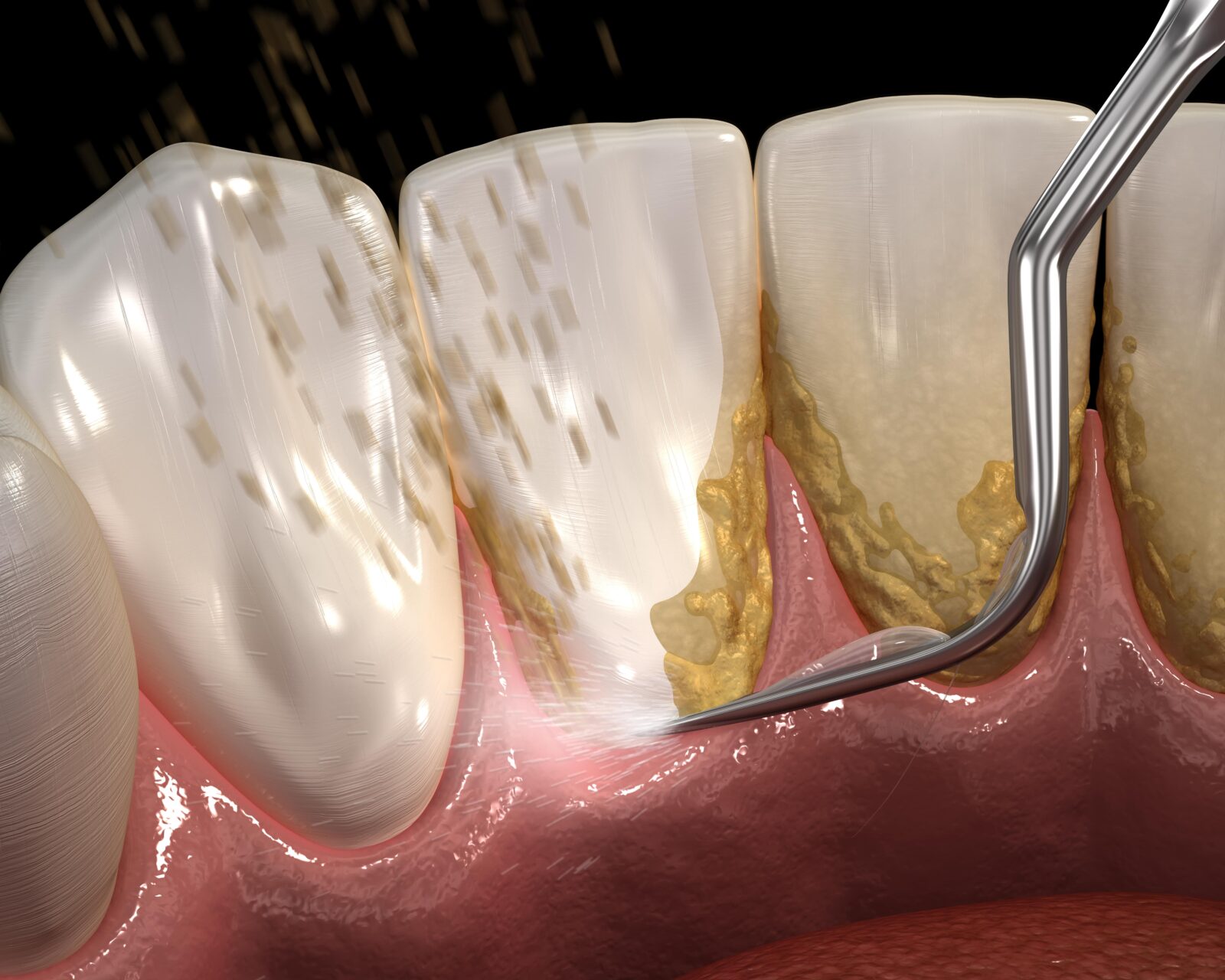
Regular dental checkups and cleanings play a pivotal role in preventing bleeding gums and ensuring optimal oral health. During these visits, dentists and dental hygienists meticulously remove tartar—a hardened form of plaque that can’t be eliminated by regular brushing or flossing. Tartar accumulation can lead to gum irritation and inflammation, precursors to gingivitis and gum bleeding. Beyond cleaning, these checkups also allow for early detection of potential oral health issues. Dentists can identify signs of gingivitis, gum recession, or other gum diseases before they escalate into more severe conditions. They also provide personalized guidance on improving one’s oral hygiene routine based on individual needs. In essence, regular dental visits act as both a preventive and diagnostic measure, ensuring that gums remain healthy and free from bleeding.
Eat a Balanced Diet:
Eating a balanced diet plays a significant role in maintaining gum health and preventing bleeding gums. Nutrient-rich foods provide essential vitamins and minerals that strengthen the gums and support the body’s ability to ward off infections. For instance, vitamin C, found abundantly in citrus fruits, berries, and leafy greens, promotes gum health by supporting collagen production, essential for healthy gum tissue. Vitamin K, present in foods like spinach, broccoli, and kale, aids in blood clotting and can help prevent excessive gum bleeding. Additionally, crunchy fruits and vegetables, such as apples and carrots, act as natural toothbrushes, helping to scrub away plaque and stimulate the gums. Calcium-rich foods, like dairy products and fortified plant-based milk, strengthen the jawbone, supporting the teeth. By prioritizing a diet rich in these nutrients and minimizing sugary and acidic foods that promote bacterial growth, one can bolster gum health and significantly reduce the risk of bleeding gums.
Quit Smoking:
Quitting smoking is a transformative decision that can have profound benefits for gum health and prevent bleeding gums. Tobacco products, including cigarettes, introduce a plethora of harmful chemicals into the mouth. These toxins can irritate and damage the gum tissue, leading to inflammation, reduced blood flow, and a weakened immune response to bacterial infections in the oral cavity. As a result, smokers are at a heightened risk of developing gum disease, a leading cause of bleeding gums. Furthermore, smoking reduces the effectiveness of gum disease treatments, making recovery slower and less predictable. By quitting smoking, individuals can significantly reduce these risks, allowing the gums to heal and regenerate more effectively. In essence, giving up tobacco not only safeguards the gums from bleeding but also paves the way for overall improved oral health and well-being.
Consult Your Doctor:
Consulting with your doctor can be a proactive step in preventing bleeding gums, especially when the root cause extends beyond typical oral hygiene issues. Some systemic health conditions, like diabetes or blood disorders, can manifest symptoms in the gums, making them more prone to bleeding. Additionally, certain medications, particularly anticoagulants or blood thinners, can affect gum health and increase bleeding tendencies. By discussing these concerns with your doctor, you can gain insights into potential side effects of your medications or receive guidance on managing underlying health conditions that impact oral health. Your doctor might adjust medication dosages, recommend alternatives, or collaborate with dental professionals to ensure a comprehensive approach to care. In essence, open communication with one’s healthcare provider serves as a preventive measure, ensuring that both systemic and oral health are in harmony, reducing the risk of bleeding gums.
In Conclusion
Bleeding gums can be a sign of underlying issues, from poor dental hygiene to more serious health conditions. It’s essential to identify the cause and take appropriate action. If you’re concerned about your bleeding gums, it’s always best to consult with a dental professional to get a proper diagnosis and treatment recommendations. Remember, early intervention can prevent more severe dental problems in the future.

